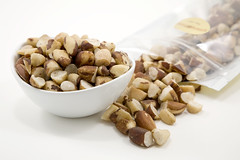Great article by
Dr. Mercola===EXCERPT OF THE ARTICLE===
THE Number One Way to Conquer a Cold or Flu: Vitamin D
Vitamin D is an amazingly effective antimicrobial agent, producing 200 to 300 different antimicrobial peptides in your body that kill bacteria, viruses and fungi.
In the United States, the late winter average vitamin D level is only about 15-18 ng/ml, which is considered a very serious deficiency state. It’s estimated that over 95 percent of U.S. senior citizens may be deficient, along with 85 percent of the American public.
...
The best source for vitamin D is direct sun exposure. But for many of us, this just isn’t practical during the winter. The next best thing to sunlight is the use of a safe indoor tanning device. If neither natural nor artificial sunlight is an option, then using oral supplements is your best bet.
Remarkably, researchers have found that 2,000 IU of vitamin D per day abolished seasonal influenza. This is somewhat surprising, as it is half the dose of what most adults need to achieve ideal levels of vitamin D
Please note that this is far greater than the recommended daily allowance (RDA) advised by public health agencies like the American Academy of Pediatrics, which recently doubled the RDA of vitamin D for children to 400 IU. This new guidance still falls absurdly short of what’s needed to keep kids healthy, especially during flu season.
In order to prevent the flu, children and adults need 35 IU of vitamin D per pound of body weight. So, for example, a child weighing 57 pounds would need 2,000 IU a day of vitamin D.
Adults typically need an average of 5,000 IU per day—but some adults have to take 20,000 to 30,000 IU daily to get their vitamin D level up to optimal levels. Exactly how adults absorb and process vitamin D so differently is still somewhat of a mystery, so the only way to know if your vitamin D level is therapeutic and nontoxic is by having your blood tested.
Not all vitamin D testing is accurate, so make sure your health care provider is ordering the correct test.
===END OF EXCERPT===
Look at your multivitamin--it is likely to have some Vitamin D, but not enough. Here's where you can get the
supplement with the recommended 5,000 IU. Get started now, BEFORE you get sick this winter!




